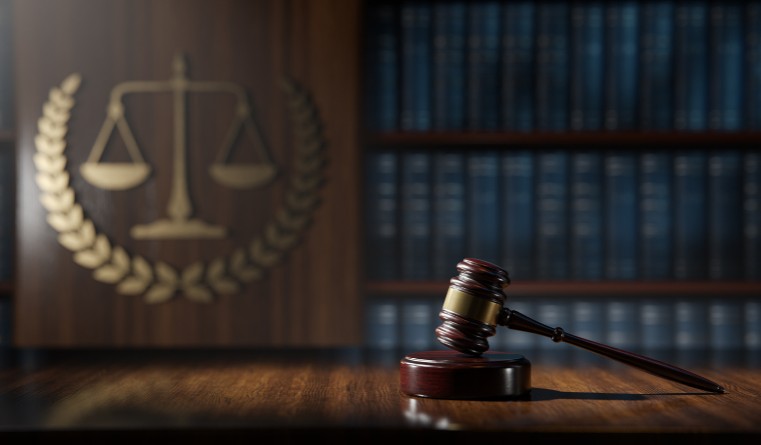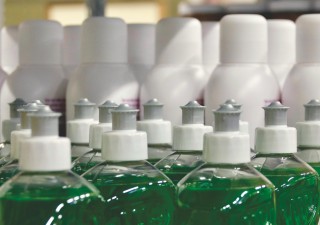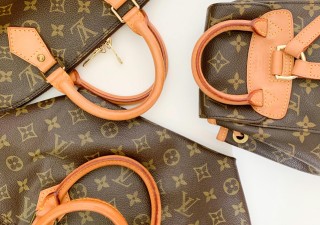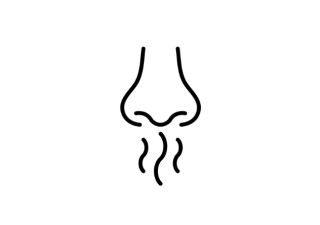As Chinese authorities are taking an increasingly tough approach to crack down on trademark squatting, more and more brand owners are taking civil action against them. Yifan Yang and Hongxia Wu examine the opportunities for civil action
As the Chinese authorities are taking an increasingly tough approach to crack down on trademark squatting, more and more brand owners are taking civil action against the trademark squatters for their trademark squatting applications and claiming damages to recover the costs incurred in fighting those applications through trademark opposition/cancellation/invalidation and administrative lawsuits. We can see that many courts have supported such claims by brand owners in civil lawsuits to better protect IP and combat trademark squatting.
On the other hand, issues such as how to manage and better coordinate the relationship between the parallel proceedings of a civil action and an ongoing opposition/cancellation/invalidation action, and how to avoid conflicting outcomes, remain a challenge for the Chinese courts, the China National Intellectual Property Administration (CNIPA) and brand owners to navigate.
Legal framework
With respect to trademark examination, the 2019 revision of the Chinese Trademark Law has introduced an express provision prohibiting the registration of bad faith trademark applications that are not intended for actual use. The same year’s CNIPA Regulations on regulating applications for trademark registrations (规范商标申请注册行为的若干规定) further provided detailed provisions on what the CNIPA can do to crack down on such trademark filings, and on what the local law enforcement authorities can do to punish or discipline the trademark agencies knowingly helping the trademark squatters. This has given the CNIPA and brand owners a great deal of leeway for to combat trademark squatting through trademark examination/opposition/cancellation/invalidation proceedings.
From the perspective of civil liability, the current Chinese Trademark Law is not clear as to whether or not mere trademark squatting constitutes trademark infringement. And the judicial interpretations of the Supreme People’s Court SPC in relation to trademark disputes have also not provided that civil liability may arise from trademark squatting applications.
It should be noted that this may change in the future. In the draft revision of the Chinese Trademark Law published by the CNIPA in 2023, there is an article (Article 83) which provides that the applicant of bad faith trademark applications should compensate the legitimate brand owners for the expenses incurred in stopping the bad faith applications.
Currently, the legal basis on which the Chinese courts hold that trademark squatters civilly liable for their bad faith trademark applications is a catch-all provision, i.e., Article 2 of the Chinese Anti-Unfair Competition Law, which provides that: All business operators shall follow the principles of voluntariness, equality, fairness, and good faith in their production and operation activities, and comply with the laws and business ethics. And that production and operation activities that violate the aforesaid, disrupt the fair order of competition, and harm the rights and interests of others are prohibited.
Our experience
Our firm has successfully assisted some of our clients in winning such civil claims and obtaining monetary recoveries from trademark squatters. Below are two typical cases.
Case one: Beiersdorf v. Tianjin Beiersdorf
In one of our cases, Beiersdorf v. Tianjin Beiersdorf (2023), which was selected as one of the 50 Typical Intellectual Property Rights Cases of Chinese Courts in 2023, the infringer was infringing our client on multiple fronts. Not only had it, together with its affiliate, filed more than 30 trademark applications for identical or similar trademarks in different classes, but it had also used our client’s trademark as its trade name and domain name, and used the marks on dissimilar goods. What’s more, it had also misappropriated our client’s history in its promotional materials.
Our client was forced to spend a great deal of effort and expense in filing trademark oppositions and invalidations against the infringer. The fight lasted for at least seven years, and two of the invalidation actions went as far as to the SPC where the Supreme Court held the infringer had obviously filed the trademark applications in bad faith, causing our client to spend a long time defending its rights, incurring unnecessary costs and suffering unnecessary losses.
Following the SPC victory, we assisted our client in bringing a civil lawsuit against the infringer for its multiple fronts of infringement, particularly the bad faith trademark applications. The first instance court upheld most of our claims and ordered the infringer to stop using our client’s mark as its domain name and trade name. However, the court did not support our claim that the infringer’s trademark squatting applications constitute an unfair competition. We persuaded the client to file an appeal. The second instance court accepted our argument and determined the infringer’s acts of filing a large number of trademark applications in different classes over a long period of time around the trademark of our client as an act of unfair competition, and fully supported the compensation we sought.
The court agreed with the SPC’s findings in the previous administrative lawsuits, and further determined that … [the infringer’s acts of trademark squatting] has disrupted the order of trademark registration, … to a certain extent has seriously interfered with [our client]’s normal production and operation, and [our client] … suffered unnecessary losses. The court conclude that the infringers trademark squatting to be a part of the infringer’s comprehensive unfair competition and a violation of Article 2 of the Anti-Unfair Competition Law.
Case two: Inditex v. Shangdian
In another case of ours, Inditex v. Shangdian (2024), the infringer had filed less than 10 trademark applications for our client’s trademark in classes related to our client’s. At the same time, it had also filed a total of over 80 trademark applications in more than 30 classes that copied other well-known brands. After obtaining its own registration of our client’s trademark, the infringer put the mark into actual commercial use.
After an initial setback in failing to oppose the registration of the infringer’s trademark registration, we assisted our client in filing an invalidation on the basis of the infringer’s bad faith, as evidenced by its large number of trademark squatting applications for various trademarks of different brands. In the ensuing administrative lawsuits, the courts of two instances upheld our claim, invalidated the infringer’s registration, recognizing that the infringer had failed to provide reasonable explanations to its large number of trademark applications and had failed to demonstrate a bona fide intention to use such marks. The courts held that the infringer’s trademark squatting constitute hoarding trademarks in bad faith.
Building on this victory, we filed a civil action against the infringer for its use of our client’s trademark and its trademark squatting. The court upheld our claim and awarded 80% of the damages we sought, holding that the infringer’s trademark squatting had forced our client to continuously defend their rights by filing trademark opposition, invalidation, and even administrative and civil litigations, which constituted the unfair competition regulated by Article 2 of the Anti-Unfair Competition Law.
Takeaways
For the court to rule in a civil lawsuit that trademark squatting constitutes unfair competition under Article 2 of the Anti-Unfair Competition Law, the above two cases have the following in common:
-
All of the infringer’s trademark squatting application / registration have been refused, cancelled, or invalidated through CNIPA proceedings and administrative litigations.
-
The bad faith of the infringer has been confirmed by the courts in the administrative lawsuit for the opposition or invalidation of the infringer’s trademark squatting.
-
In addition to the mere filing of trademark squatting applications, the infringers have used the squatted sign in commerce in various ways, either as a trademark on their goods/services, or as a trade name or domain name.
On the other hand, there is a clear difference between the two cases as to whether injunctive relief should be granted against trademark squatting. In Inditex, the court ordered the infringer to stop the trademark squatting without further elaboration. In Beiersdorf, although the court recognized trademark squatting, as a part of the infringer’s comprehensive infringement, violated the Anti-Unfair Competition Law, the court did not issue an injunction against such acts, stating that each trademark squatting application had been finished once the application was filed, so that there was no factual basis for an injunctive relief.
The current practice
From our experience in handling these cases, and by researching the most recent judgments of the Chinese courts in similar cases, it has become increasingly clear that the courts are still finding consensus on the issues of whether or not trademark squatting application should be considered an unfair competition and whether or not to grant injunctive relief against trademark squatting.
Mere trademark squatting applications hardly constitute unfair competition
In Castro v. An’naichi (2023), the brand owner sued the infringer for trademark infringement or unfair competition solely on the factual basis that the infringer had filed trademark squatting applications and caused damages to the brand owner. Beijing IP Court rejected this claim, citing that mere trademark applications do not constitute a trademark-use under the Trademark Law or an act of production and operation under the Anti-Unfair Competition Law, thus not infringing on the brand owner’s rights or interests.
The Beijing High People’s Court further stated in Afton v. Beijing Weixin (2021) that the brand owner should seek remedy through CNIPA proceedings and administrative lawsuits instead of through civil actions.
Infringer’s additional acts of bad faith help increase chances of success against trademark squatting
On the other hand, if the infringer had committed additional acts of bad faith that could be considered as trademark use or act of production and operation, the likelihood for the courts to consider trademark squatting as civil liable unfair competition would be significant increased.
For example, the Tianjin High People’s Court considered that trademark squatting in Beiersdorf (2023) constituted a part of a comprehensive infringement. Such examples can also include the Sichuan High People’s Court in Shante v. Taiqi (2024), the Hubei High People’s Court in Guangdong Haotaitai v. Jiangsu haotaitai (2025), etc.
Having infringer’s trademark refused or invalided is important to winning an unfair competition decision against trademark squatting
In a widely influential case, Emerson v. Hemeiquan (2021), the infringer had filed 48 trademark squatting applications and had virtually no use of the squatted mark itself. The brand owner filed over 70 legal proceedings to defend its rights and eventually had all of the infringer’s trademark refused or invalidated. The infringer’s bad faith was confirmed by the courts in the administrative lawsuits and CNIPA proceedings. Based on this, the Fujian High People’s Court held that the infringer’s such trademark squatting and use constituted unfair competition.
The Beilin Primary People’s Court of Xi’an, Shaanxi, went one step further in Qiaoshi v. Yuanshun (2024). In this case, the infringer had filed 47 trademark squatting applications against the brand owner and had not actually used them. Through trademark opposition and invalidation, the brand owner in this case had 14 trademarks of the infringer refused for registration and forced the infringer to withdraw or cancel all other trademark applications/registrations.
If the infringer had abused its trademark registration or CNIPA proceedings against the legitimate brand owner, the chances of success would further increase
In Brita v. Kangdian (2020), traditionally considered to be the first case in which the Chinese court held that trademark squatting constituted unfair competition, the key factor was that the infringer not only used the squatted trademark in commerce, but also abused its later invalidated registration and the CNIPA proceedings to file trademark oppositions and invalidations against the legitimate brand owner, thereby disrupting the latter’s normal business operations.
Similarly, in Ganba v. Huaying (2023), the Quanzhou Intermediate People’s Court of Fujian held the infringer’s acts constituted unfair competition in part because the infringers abused the CNIPA proceedings to oppose or invalidate the brand owner’s own trademarks.
Challenges regarding relations with conventional trademark prosecution and invalidation proceedings
Despite the above cases, some influential courts have begun to take a more cautious approach so as not to interfere with the trademark prosecution and invalidation proceedings, even if the infringer’s bad faith was evident in other respects.
In Jingtian v. Bairun (2022), the Beijing IP Court did not support the brand owner’s claim that the infringer’s trademark squatting constituted unfair competition under Article 2 of the Anti-Unfair Competition Law because: (1) the infringer’s trademark squatting had been dealt with in CNIPA proceedings and the subsequent administrative lawsuits; (2) the trademark registrations obtained by the infringer had been invalidated; and (3) Article 2 is a principle-based provision.
In Jinpai Kitchen v. Jinpai Holding (2024), the Zhejiang High People’s Court also held that trademark squatting in that case did not constitute unfair competition because of the nature of mere trademark applications and the relationship between the Anti-Unfair Competition Law and the Trademark Law. The court noted in that case that the infringer at that time had more than 20 valid trademark registrations, and further explained that … the coordination between the Anti-Unfair Competition Law and other laws should be taken into consideration when invoking Article 2 … The acts of applying for trademark registration … are not production and operation activities regulated by the Anti-Unfair Competition Law … The validity of trademark registrations should be examined by CNIPA on a case-by-case basis … If [the court] determines in a civil lawsuit that the mass trademark registrations indiscriminately constitute unfair competition, it is very likely to conflict with the outcome of the trademark prosecution and invalidation proceedings … it is not appropriate to apply Article 2 to regulate the trademark registrations in question.
Conclusions
Although some courts have different views on whether Article 2 of the Anti-Unfair Competition Law can be applied to regulate trademark squatting applications, we can see that the principle that the trademark squatters should be liable to the brand owner for its costs of fighting trademark squatting applications has become a consensus among most courts and Chinese lawmakers as evidenced by the above cases and the new draft of the Trademark Law revision.
In the meantime, we believe that the SPC would like to set a precedent for similar cases by selecting Beiersdorf (2023) as one of the 50 Typical Intellectual Property Rights Cases of Chinese Courts in 2023, i.e., If the squatted trademarks are all invalidated or refused for registration, and that the trademark squatter has committed a comprehensive infringement on the brand owner, of which the trademark squatting is a part, Article 2 of the Anti-Unfair Competition Law could be applied to regulate the trademark squatting issues. However, injunctive relief would not be available because the acts of trademark squatting would have ceased upon the filing of each of the trademark squatting applications.










